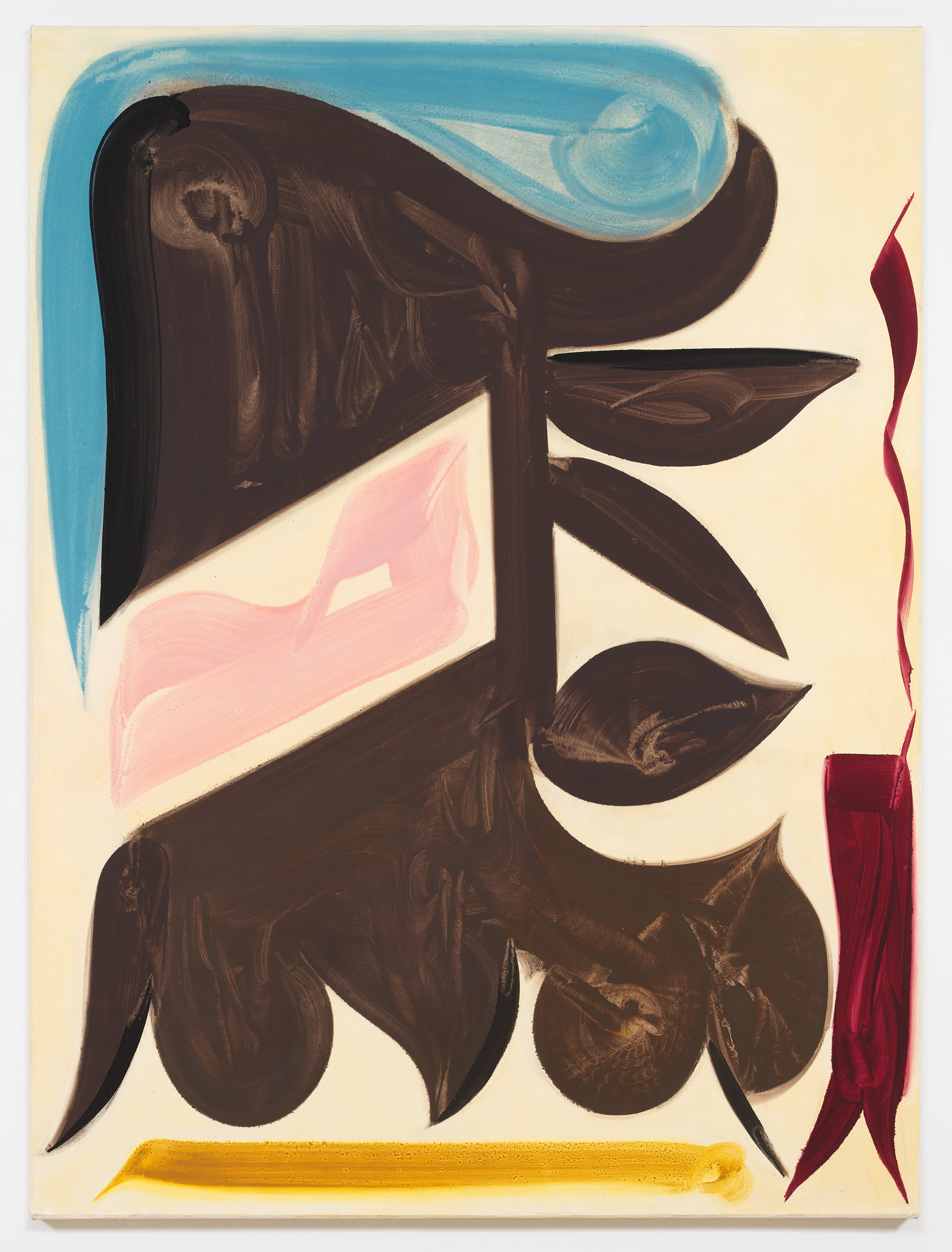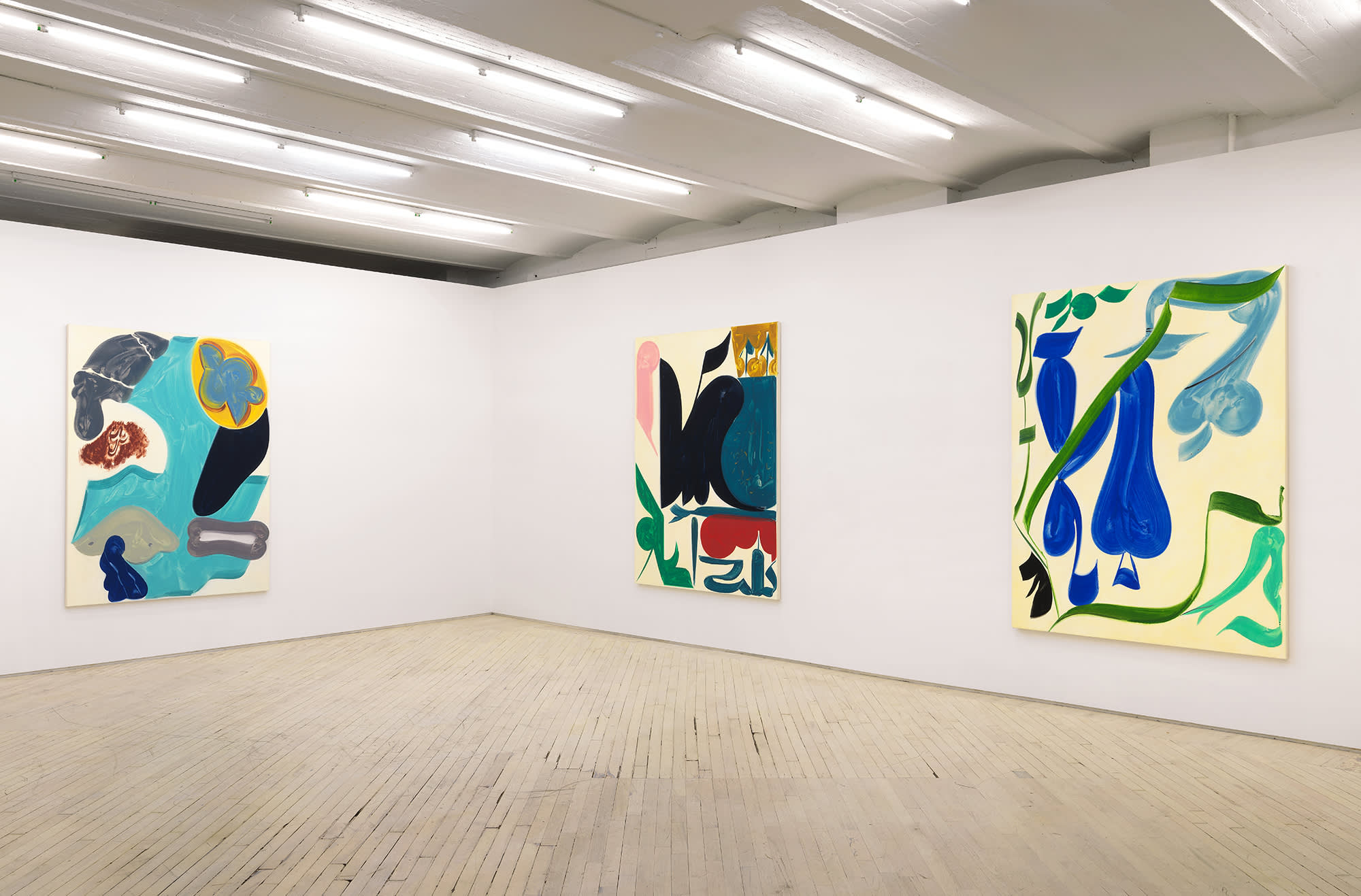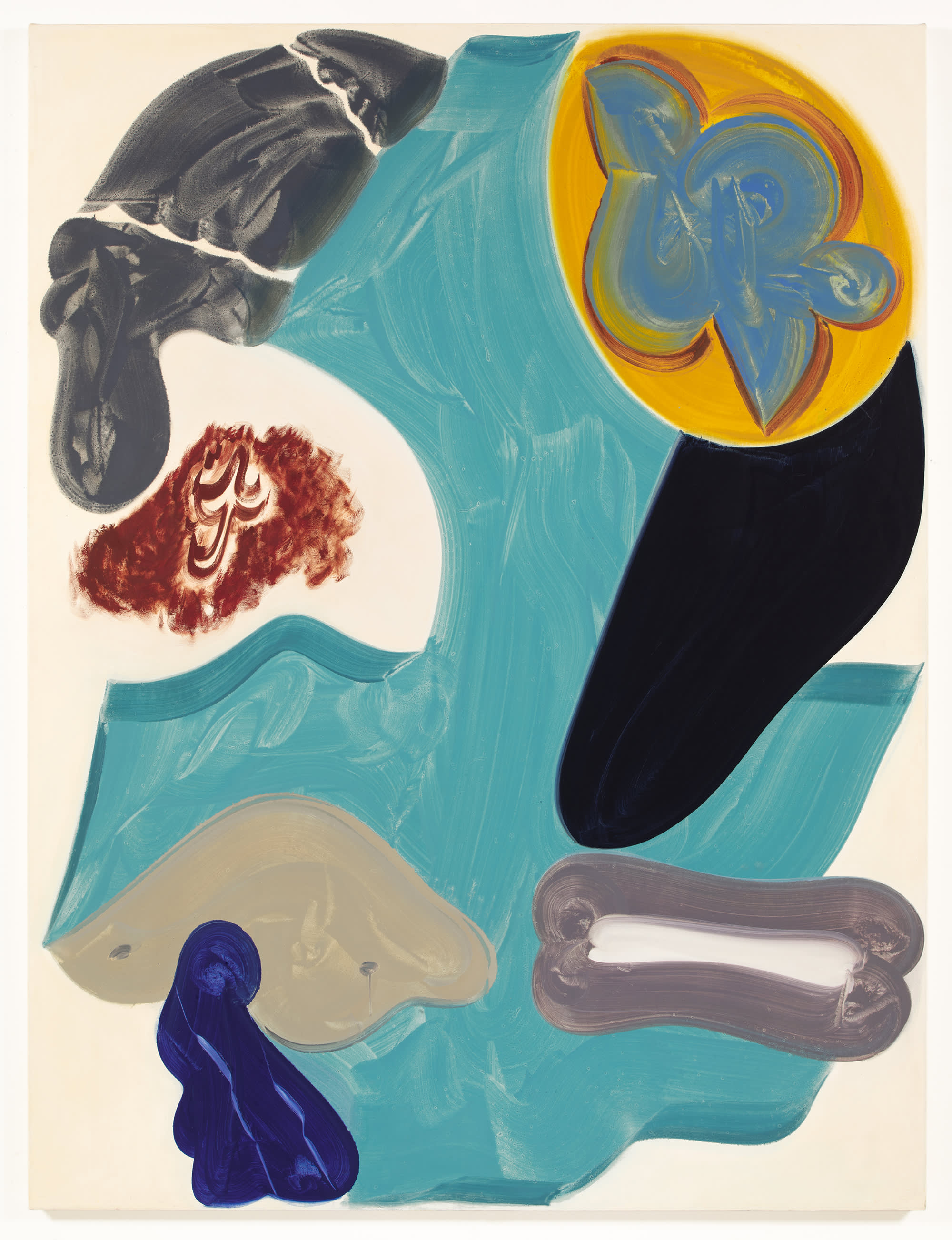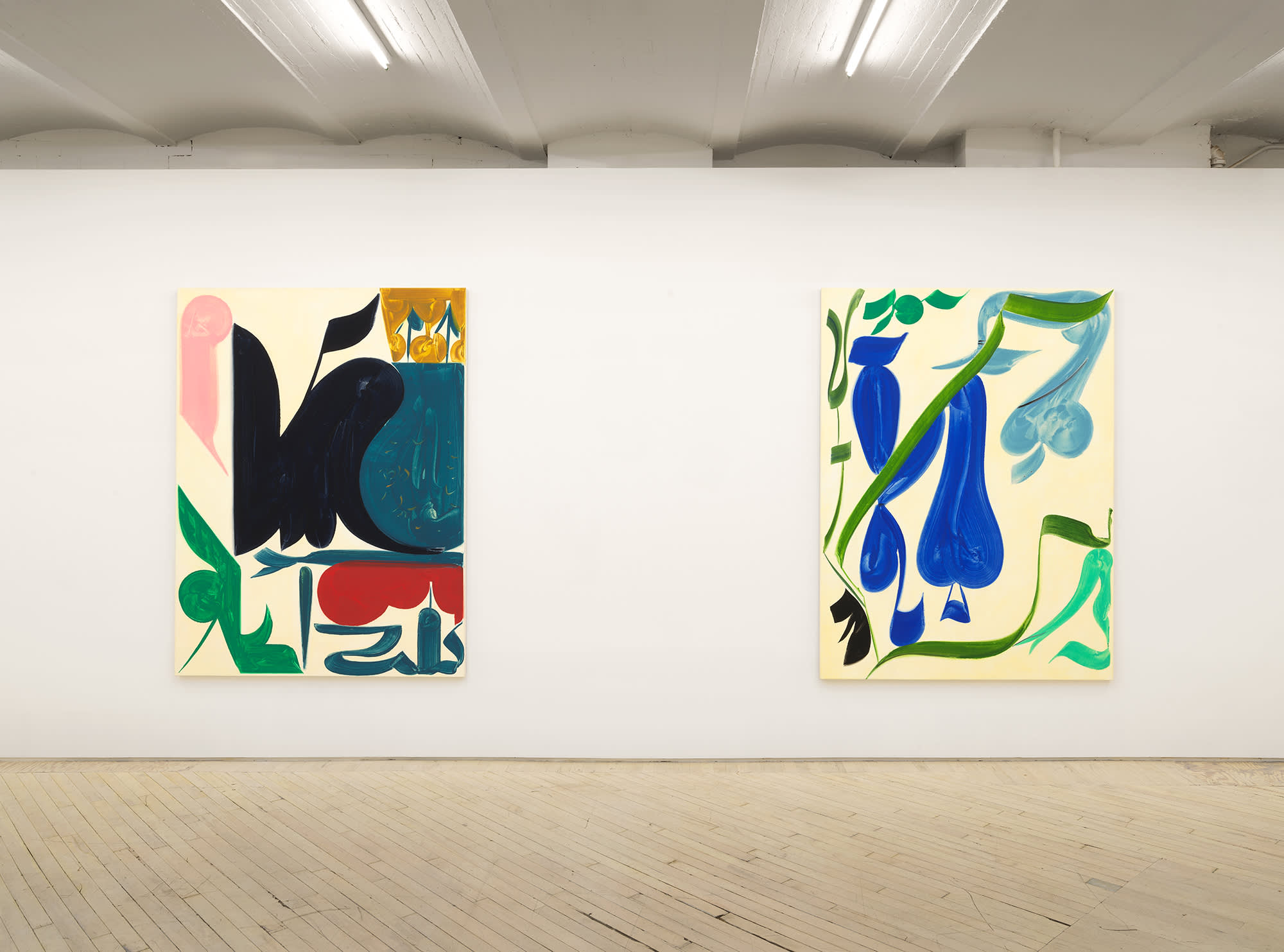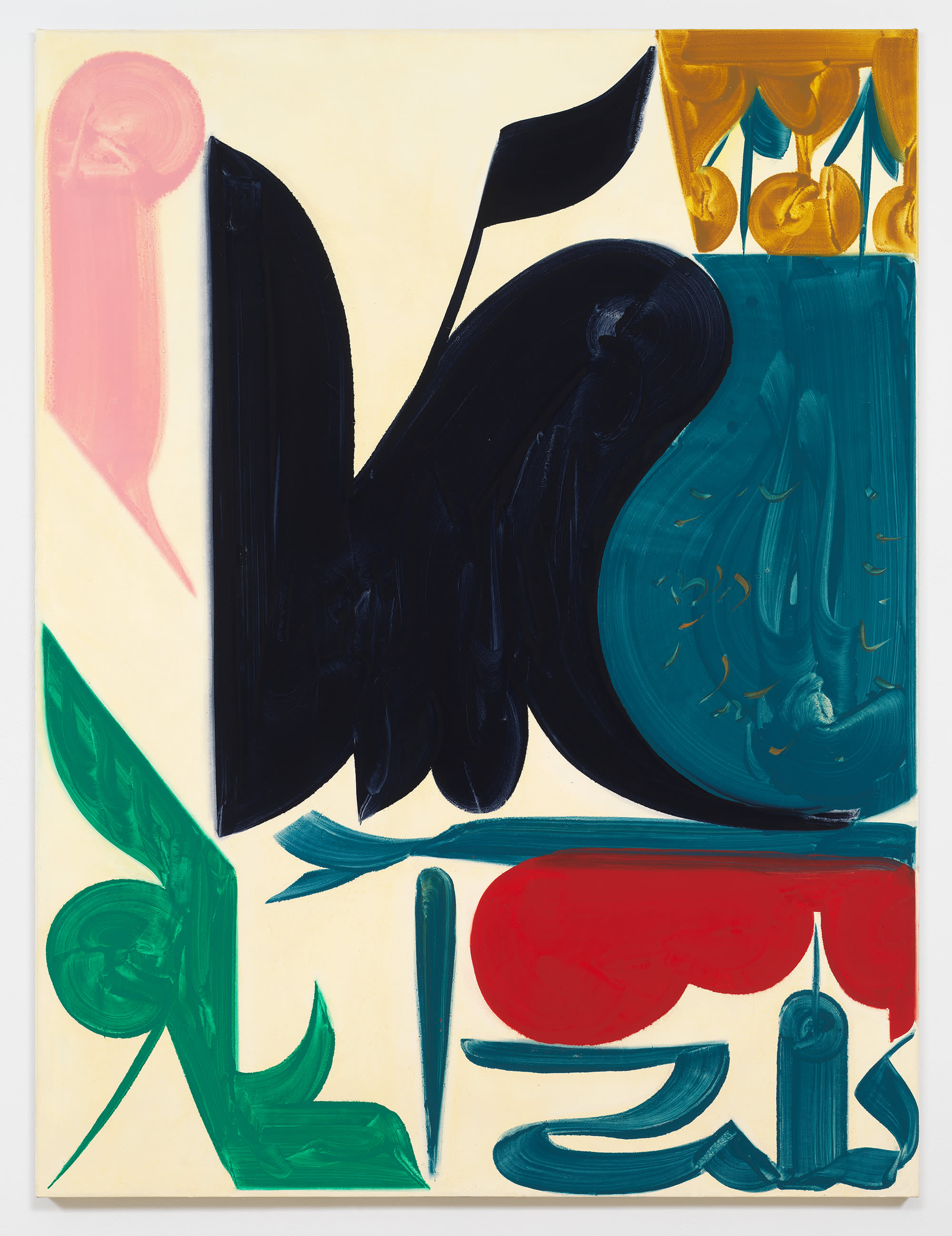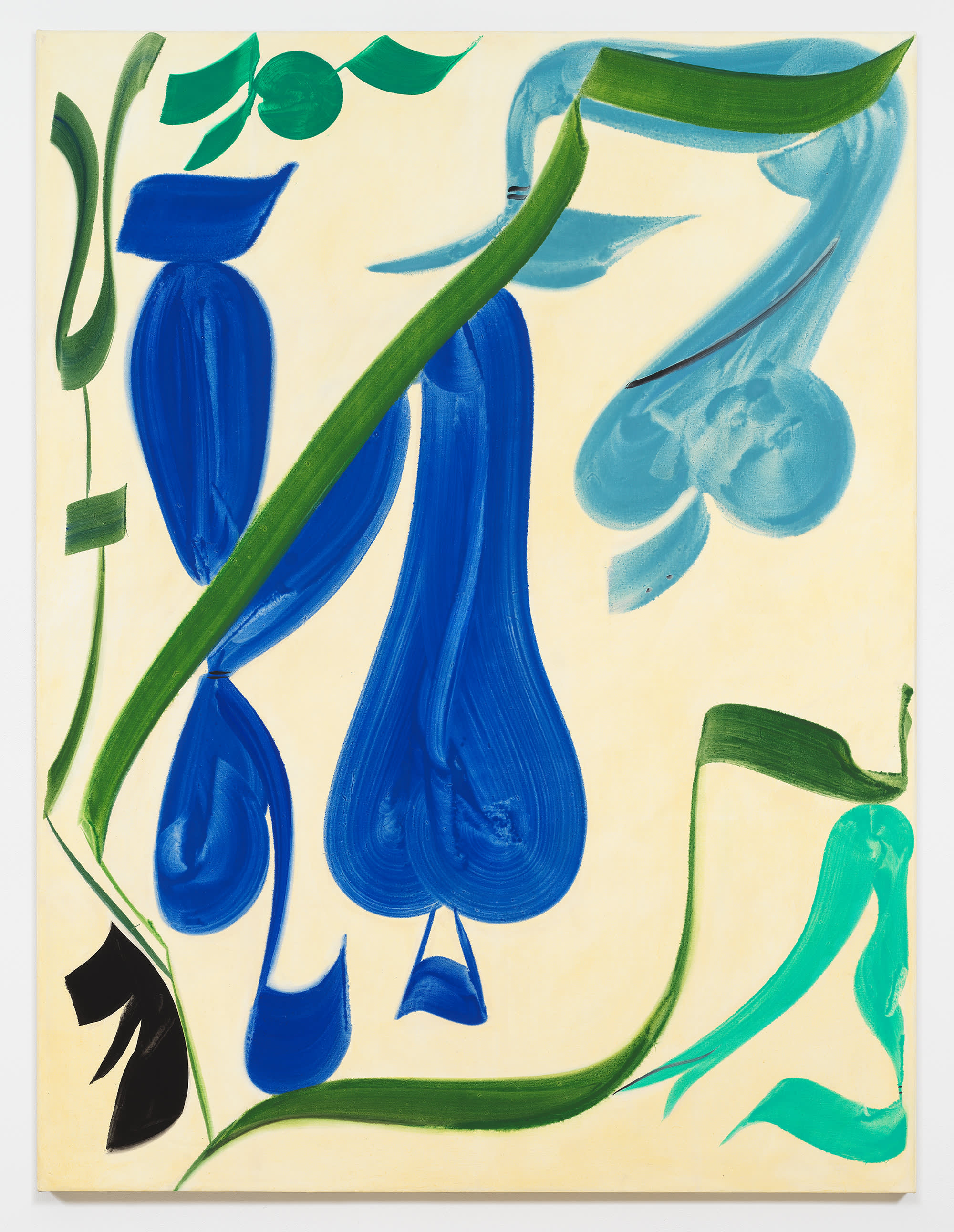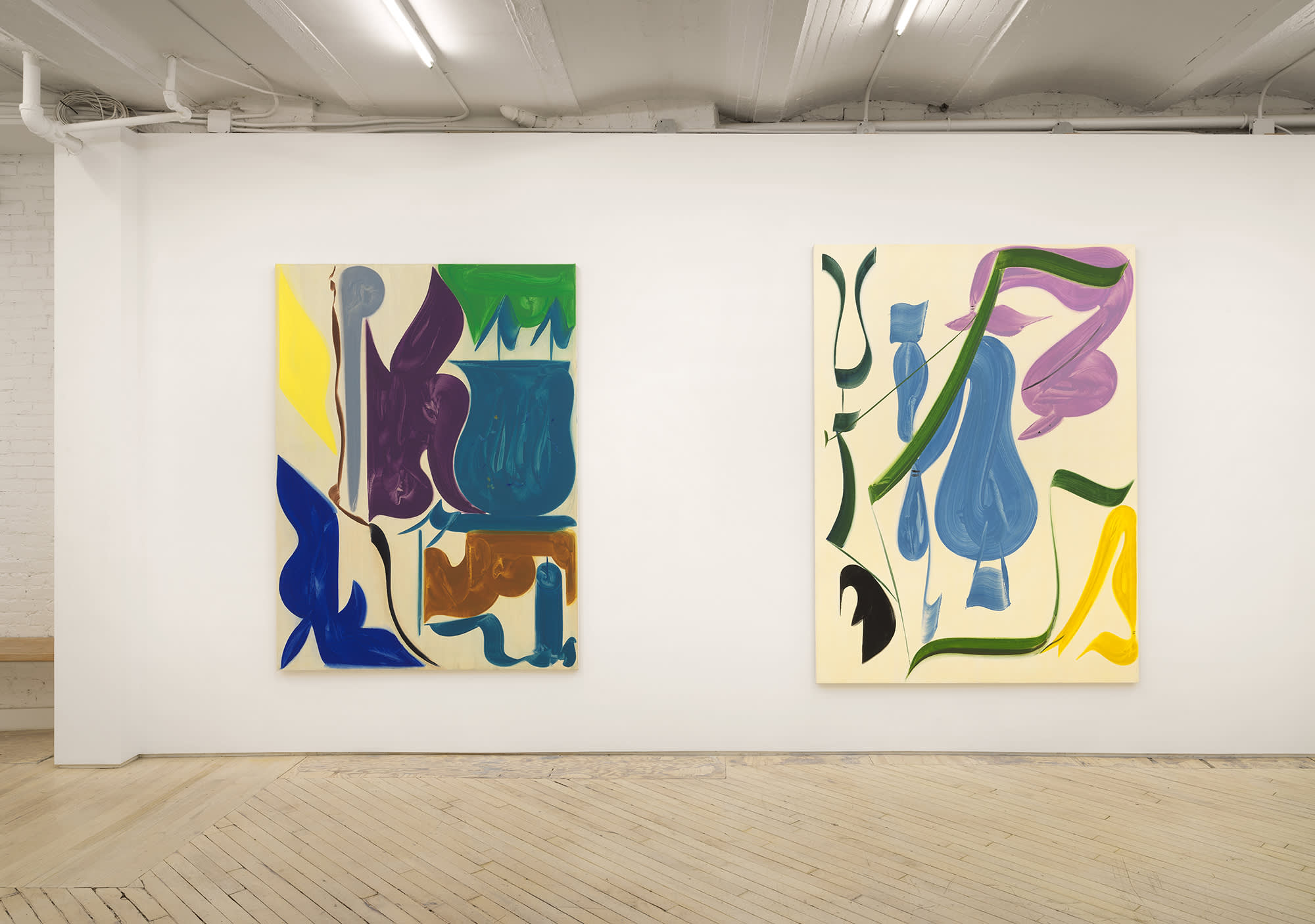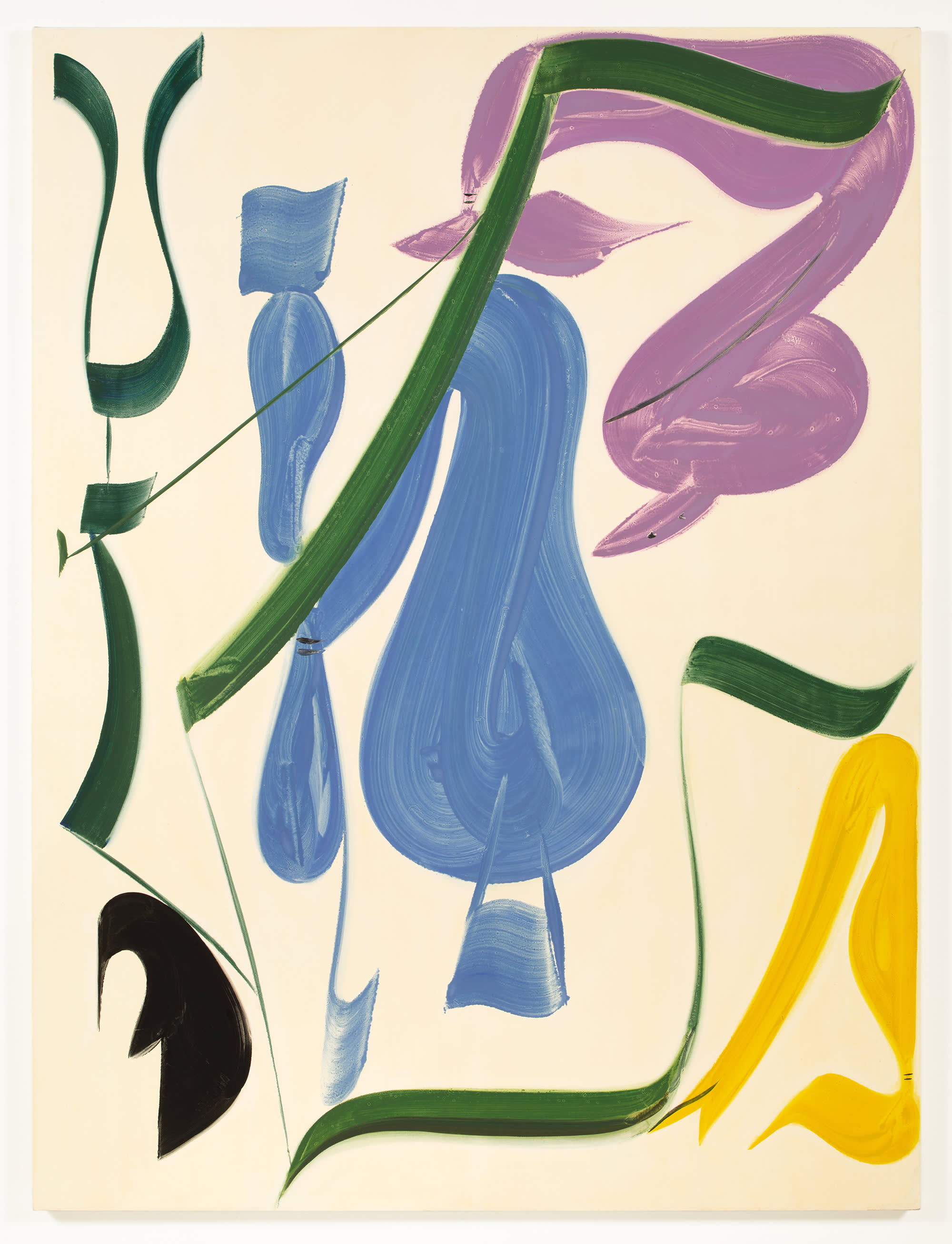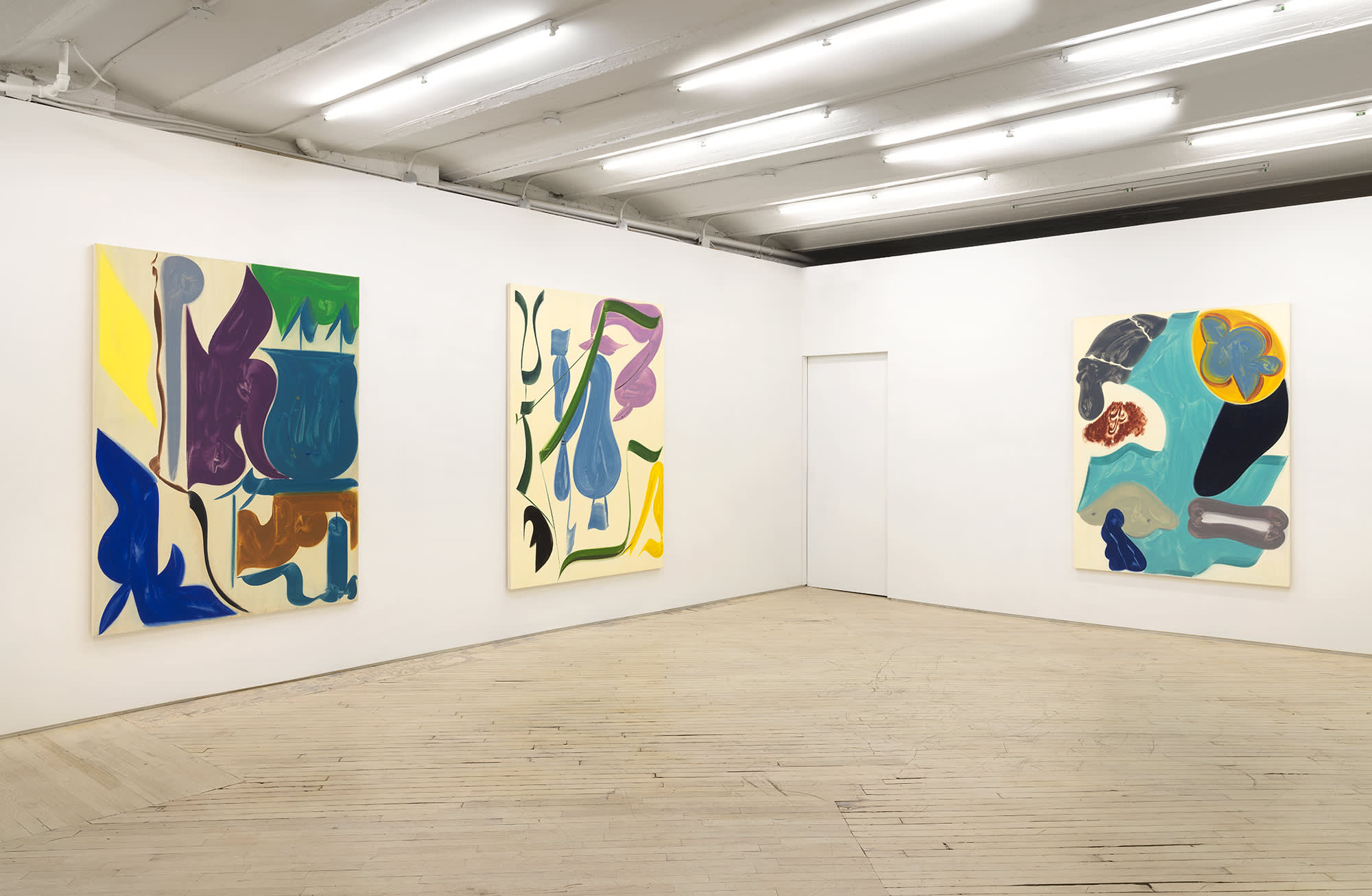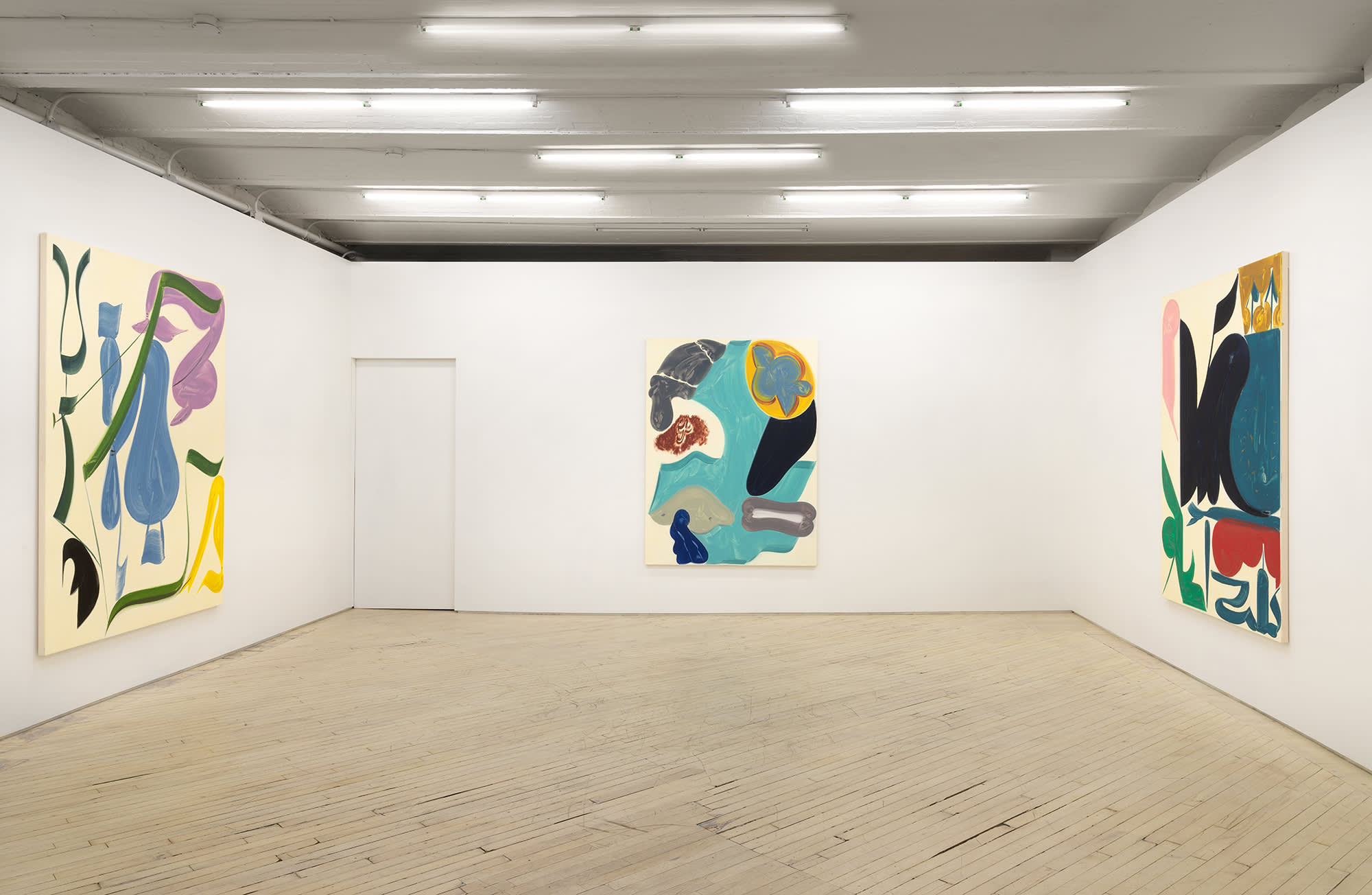Exhibition: Arm Measures
Patricia Treib Arm Measures September 10 – October 31 2020
Bureau is pleased to announce Patricia Treib’s second solo exhibition with the gallery, Arm Measures. Coinciding with this exhibition will be the launch of Treib’s first monograph, which includes color plates of paintings from the past seven years, an interview by poet and novelist Ben Lerner, and an essay by art historian Joanna Fiduccia. An excerpt from Fiduccia’s essay, “Three Items,” is quoted below:
Treib works at an immersive scale, one that feels closer to the size of a bed than a door. You enter these paintings rather than pass through them. Nearly all are executed in the span of a single day. Working quickly but deliberately, Treib lays the canvas on the floor and then uses wide hake brushes to sweep paint over the surface, wiping out a gesture and then repeating it until each trace appears fluent and precise. These gestures appear as supple as her forms are mobile. With a turn of the brush, a contour line pools into a field of limpid color, which then divides into rhythmic strokes—contour, figure, and ground, all unified in a continuous mark. A soft skein of color can be flipped and pleated like a ribbon; a giant blue blot can be broken by the fluttering motion of a brush weaving through it. Just as the vibratory arrangement of forms in her paintings invokes the relation of the body to what it sees, these strokes suggest a mode of seeing through contact with the world, like the blind sculptor described by Roger de Piles, whose eyes were at the tips of his fingers. Treib thins her paints slightly so that they appear saturated yet translucent, and this gives her forms neither the solidity of still life nor the atmospherics of landscape. Instead of imagining that you might manipulate these figures or transport yourself into their midst, you are enjoined to follow the movements that produced them—the hand that wimpled or smoothed a shape, just as the body might sculpt a bed sheet.
The sheets referenced by Treib’s paintings, however, belong not to beds, but to sketchbooks. Their off-white grounds suggest the small rectangles of paper on which Treib first works out her compositions, developing them sometimes over the course of years. The same composition can serve numerous works, which as a result share a sibling relationship, differing in their palettes, the subtle inflections of their features, or the expression of their elements. Because she rarely hangs works that share the same source close to one another, these resemblances might at first elude the viewer. An apparent automatism at the level of production carries into an automatism at the level of reception. In this mode, paintings appear like echoing phrases or, as the artist suggests, like afterimages, their tones inverted and vibrating on a new surface.
The execution of the painting is one contraction of time: namely, the time of preparation, which spans from the first sketch on paper, which might have been made years before the large painting, to the day the canvas was laid out on the floor. The legibility of the painting’s production is another contraction: namely, the brushstrokes, through which one can almost reconstruct Treib’s movements over the canvas, each one as particular as the way someone picks up a glass or sits in a chair. The conveyance of perception is a third: namely, the full spatial and temporal situation in which Treib beheld something—a fullness that included her in it, and now similarly implicates the viewer.
-Joanna Fiduccia, “Three Items”
Patricia Treib was born in Saginaw, MI, and lives and works in Brooklyn. Solo exhibitions have been held at Kate MacGarry, London (2019); Galerie Nordenhake, Stockholm (2018); Bureau, New York (2017); Galería Marta Cervera, Madrid (2016). Recent group exhibitions include Le realtà ordinarie, curated by Davide Ferri, at the Palazzo de Toschi, Bologna (2020), and The Samovar, Overduin & Co., Los Angeles (2019). She has participated in residencies at the American Academy in Rome (2017), the Dora Maar House (2014), MacDowell (2013), and was a recipient of the 2017 Artadia Award and a 2020 Guggenheim Fellowship.

